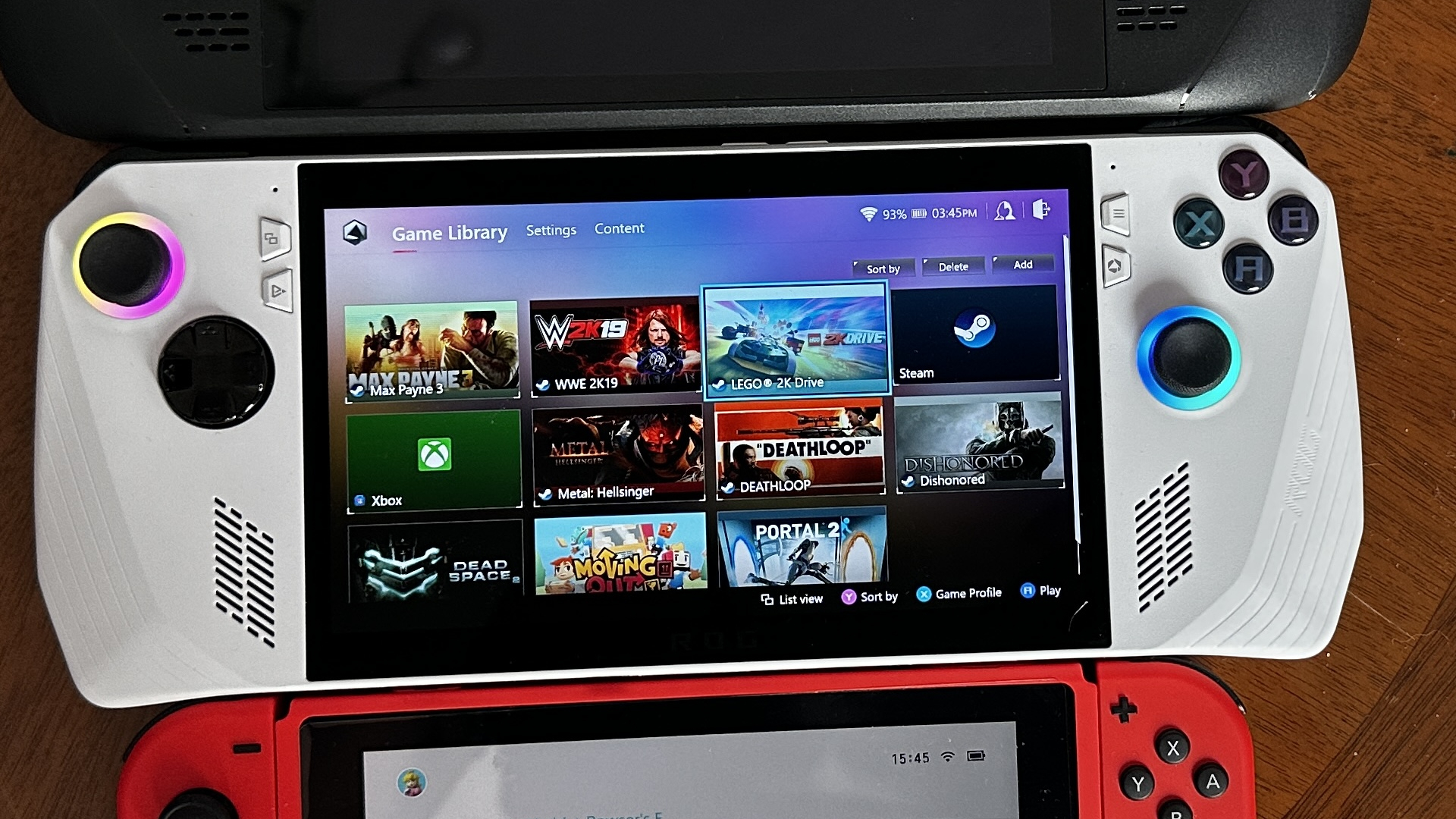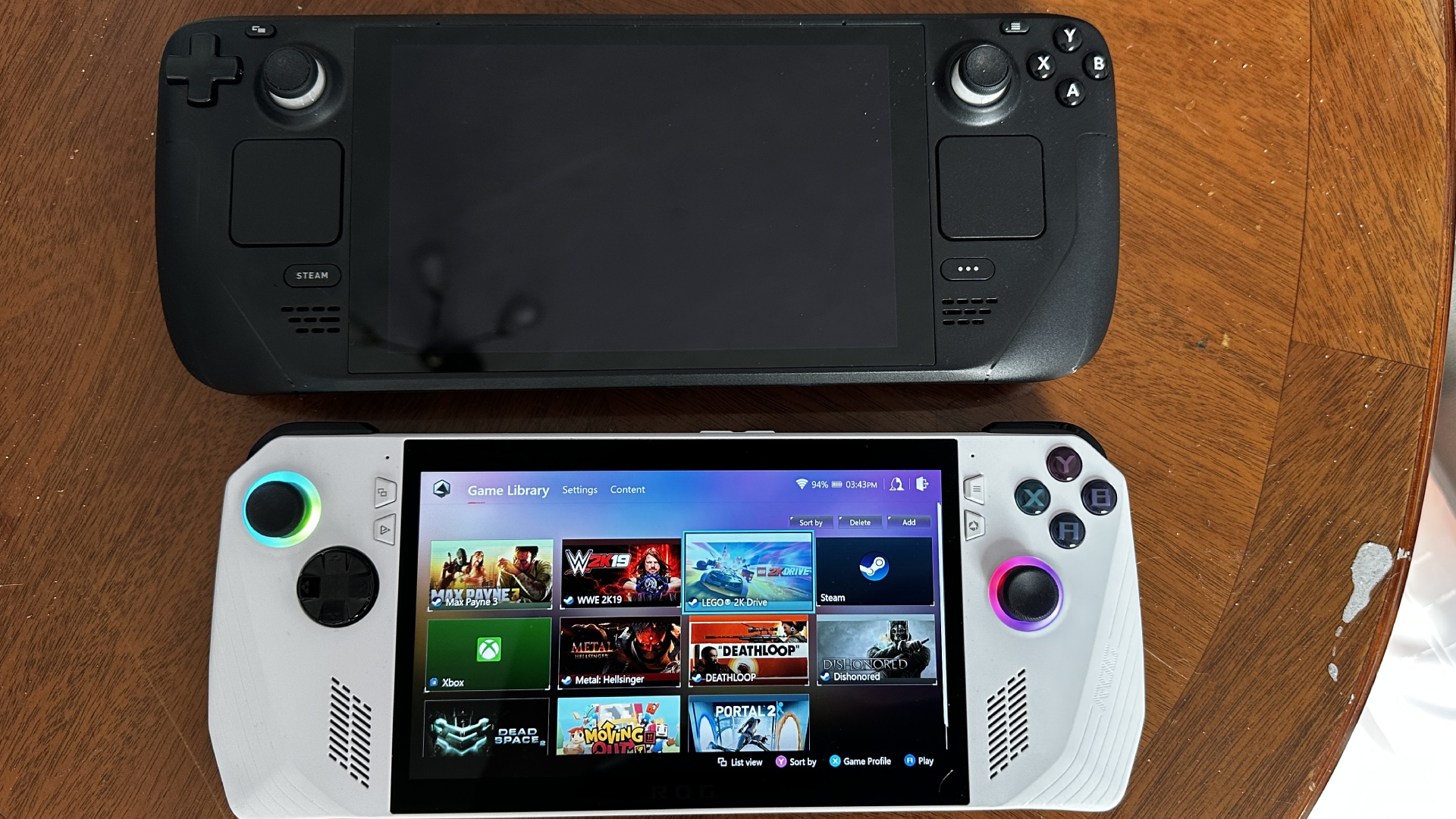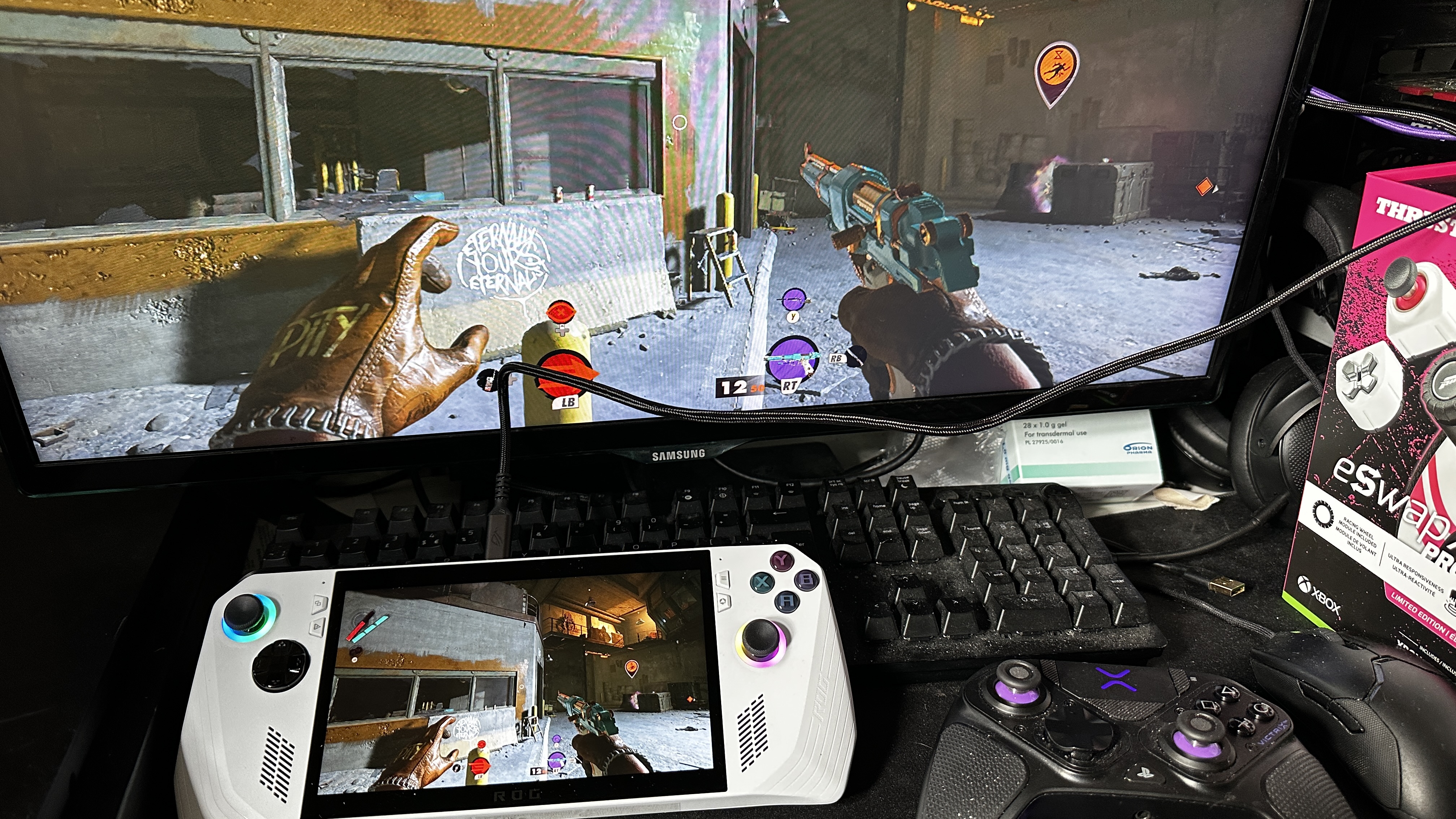The Asus ROG Ally is the perfect balance between gaming PCs and home consoles
The missing link

The divide between consoles and PC has been present for as long as the hardware has existed, however, the Asus ROG Ally has taken steps to bridge the gap by bringing a level of console convenience to what can be an intimidating gaming landscape.
I’ve been a PC gamer for more than a decade, and have always found that for as good as gaming PCs are, there’s always something in the way that’s prevented widespread adoption. Generally speaking, this will be the price of a mid-range or high-end machine, with some of the top gaming PCs often costing thousands when well-kitted out. That’s why the rise of portable PCs as some of the best handheld games consoles really appeals to me. This has proved to be a barrier given the significantly cheaper costs of something like the Xbox Series X, PS5, and Nintendo Switch.
The two top-end consoles from Microsoft and Sony will set you back $499 / £449 / AU$749 and $499.99 / £479.99 / AU$799.95, respectively. These machines are capable of some seriously impressive visuals and performance in some of the latest games. One of the biggest strengths of the Asus ROG Ally is that it’s priced competitively to some of the best games consoles. It is set to retail for $699 / £699 / AU$1,299, which, while pricier than any console right now, is still significantly cheaper than the cost of the best gaming PCs available.
The form factor of the Asus ROG Ally is another major plus for the handheld PC gaming scene. At 608g / 1.3lbs, it’s a little bulkier than the Nintendo Switch OLED (420g / 0.9lbs), but still notably lighter than its main rival, the Steam Deck which weighs in at 669g / 1.4lbs. Heft aside, Asus’ handheld features a much sleeker chassis with familiar stick and button placements that console gamers should be immediately used to.
Power in the palm of your hand

Screen: 7-inch IPS 120Hz 1080p (FHD) display
CPU: AMD Ryzen Z1 Extreme (8-core / 16-threads)
GPU: AMD RDNA 3 graphics @ 2.7 GHz
RAM: 16GB LPDDR5 memory
Storage: 512GB Gen 4 NVMe SSD
What helps the Asus ROG Ally out when compared to its competition is power under the hood which makes for fewer sacrifices overall. This machine is rocking a 7-inch IPS 120Hz 1080p LCD screen and is powered by AMD’s latest Z1 Zen 4 CPU and RDNA 3 integrated graphics microarchitecture. This combination means that this handheld is capable of running titles natively in Full HD (1080p) without the need to scale the settings down too much.
It’s a lot more horsepower than the Nintendo Switch and delivers on the same promise: console games on the go. Throughout my testing with the Asus ROG Ally I was thrilled to see the likes of Lego 2K Drive, WWE 2K19, and Deathloop running flawlessly, and looking as sharp as they would on my mid-range gaming PC. I wasn’t just streaming them like I would be with the Logitech G Cloud or Nintendo’s cloud versions of certain games, either - it was all running natively. It was as easy as selecting Steam, downloading a game from the Big Picture menu, and then opening the game. However, there is a little busy work needed for things to go smoothly.
Software is what has let the Asus ROG Ally down on the console convenience front as it runs on Windows 11 - for better or worse. On one hand, you’re getting the full and unfiltered potential of the operating system in your hands, but on the other, you’re having to deal with Windows 11. Broadly speaking, the Asus Armory Crate helps to centralize things but it’s not quite perfect yet. The reality of it is that it means you have to launch a game from Steam, close it, and then launch the game itself from the main menu before the X-inputs were fully registered. Annoying, but after that was done once per game it wasn’t a problem for me anymore, thankfully.
Get daily insight, inspiration and deals in your inbox
Sign up for breaking news, reviews, opinion, top tech deals, and more.
A handheld that can do both

The Asus ROG Ally is an excellent handheld console when used in its portable mode but that’s only one side of the story. Similar to the Steam Deck’s dock, you can pick up the ROG Gaming Charger Dock which actually shares more in common with how things work on the Nintendo Switch. This brick plugs straight into the wall and gives you power delivery through USB-C, as well as HDMI 2.0 and USB 2.0 ports. It’s a means to take what you’re playing on to one of the best gaming monitors, and the USB port is ideal for one of the best PC controllers too, for example.
As the Asus ROG Ally runs games natively at 1080p they look great when played on a larger monitor and run surprisingly well. The decision to have a single USB port instead of two meant that a wired controller, like the Victrix BFG Pro, is really better for navigation than choosing between a mouse and a keyboard. It meant that all I had to do when going from handheld gaming to big-screen play was plug the device in via USB-C and things went large instantly and easily. For as much as there’s been an argument for a Nintendo Switch 2, this device really lives up to the notion of a powerhouse console without compromise.
The utilization of Xbox Game Pass, supported on the Asus ROG Ally, is sure to be familiar to those who Microsoft’s ecosystem, and for some folks might mean this is the closest we’re realistically going to get to a portable Xbox console. This also further cements this machine being a stronger and more attractive proposition when considered a handheld games console that uses Windows 11 rather than a handheld PC in its own right. It’s made me believe that small form factor rigs can be every bit as capable as the tower and consoles sitting on my desk.

Formerly TechRadar Gaming's Hardware Editor, Aleksha McLoughlin is now a freelance writer and editor specializing in computing tech, video games, and E-commerce. As well as her many contributions to this site, you'll also find her work available on sister sites such as PC Gamer, GamesRadar, and Android Central. Additionally, more of her bylines can be found on Trusted Reviews, Dexerto, Expert Reviews, Techopedia, PC Guide, VideoGamer, and more.